I resumed making the necklace that was interrupted the other day due to the thread being cut halfway. Although I wanted to make the necklace with yellow thread, it seemed a bit thin, so this time I will prioritize safety and make it with thick, sturdy, and expensive silver thread.
First, I will cut the thread that was cut last time and return to the original state. If I make an all-knot, I won’t be able to undo it without cutting each knot one by one. It’s a tedious task.
Then, I will thread the thread through all the pearls.
Next, I will make two knots between each of the pearls. This video was shot in time-lapse mode on an iPhone, so it’s too fast to understand what’s going on.
These pearls are of very high quality. When compared with a mid-range necklace, the latter looks cheap in comparison. The layers of pearls are thick, and their luster is very strong. It might be an exaggeration to say that they would glow even in the middle of a forest at night, but they certainly have a remarkable shine.
While round pearls are preferred by many, I don’t necessarily think that way. I believe that the thickness of the layers and the luster of the pearls are the foundation of their quality, rather than their shape. Pearls with a hard texture in their layers, like those found in Akoya oysters, are truly attractive. During the cultivation process, the health of the Akoya oyster affects the formation of the pearl layer. If the Akoya oyster is healthy, the layers it secretes will be stacked up like a neatly arranged brick wall. On the other hand, if the oyster is unhealthy, the layers will be irregularly arranged like a crooked brick wall. Of course, if the layers are neatly arranged, the pearl will have transparency and depth, as light can pass straight through it. On the other hand, if the layers are irregularly arranged, the light will refract in various directions, creating a vague and hazy luster in the pearl.



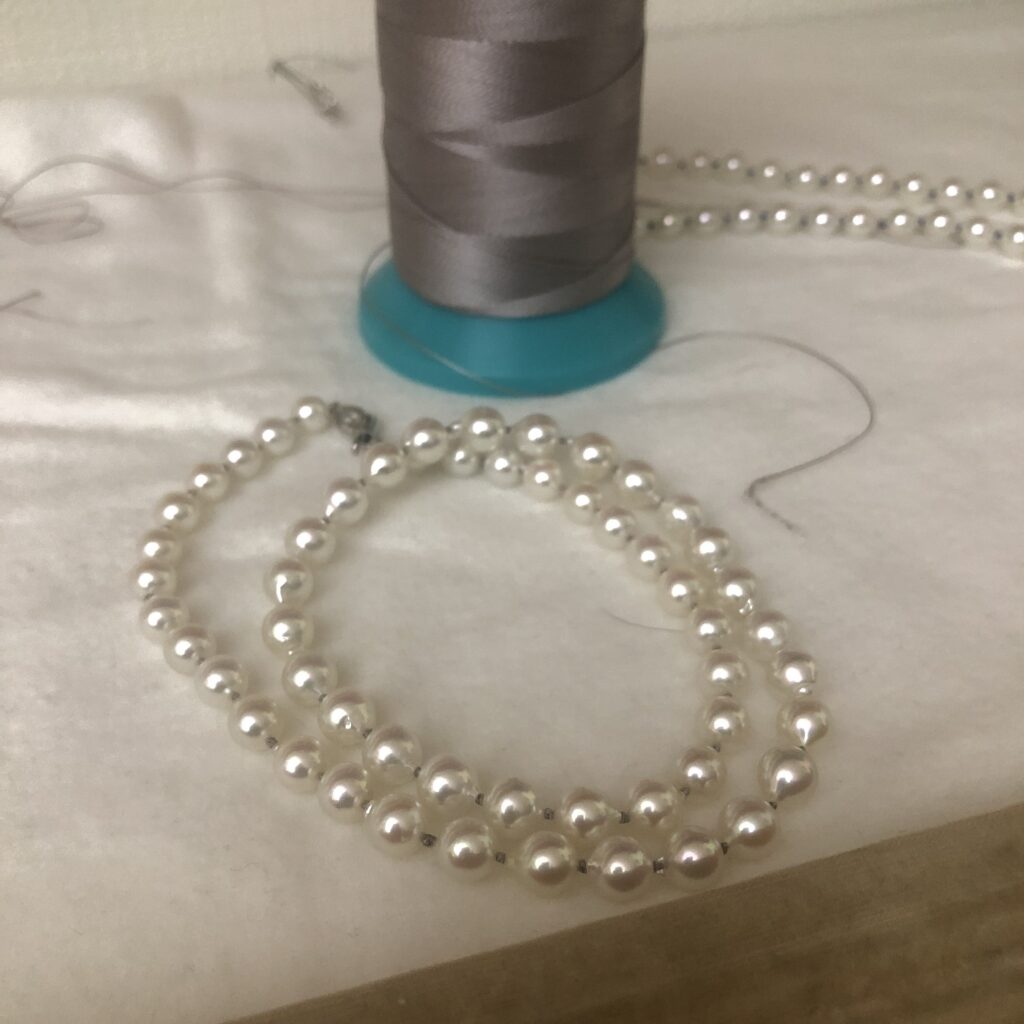
Pearls are gemstones. As a gemstone, I believe that an attractive shine is essential. In the case of pearls, the thickness of the pearl layer and its shine are very important in that sense. Therefore, the shape and the presence of wounds are less of a priority for me personally. A perfectly round pearl without wounds may not be attractive if the pearl layer is thin. Of course, in the market, such pearls will have higher prices and evaluations. However, for me, it is just a label or a title. Just like there are many incompetent CEOs out there, high evaluations can be given just because of one’s position. If I were to work with someone, I would prefer to work with a competent regular employee rather than an incompetent CEO. Of course, these are all based on individual values and perspectives. This is my perspective on pearls. On the other hand, I also like pearls with a vague shine that give off a warm feeling. Pearls are the only organic gemstones, and perhaps that’s why they give me that kind of impression.
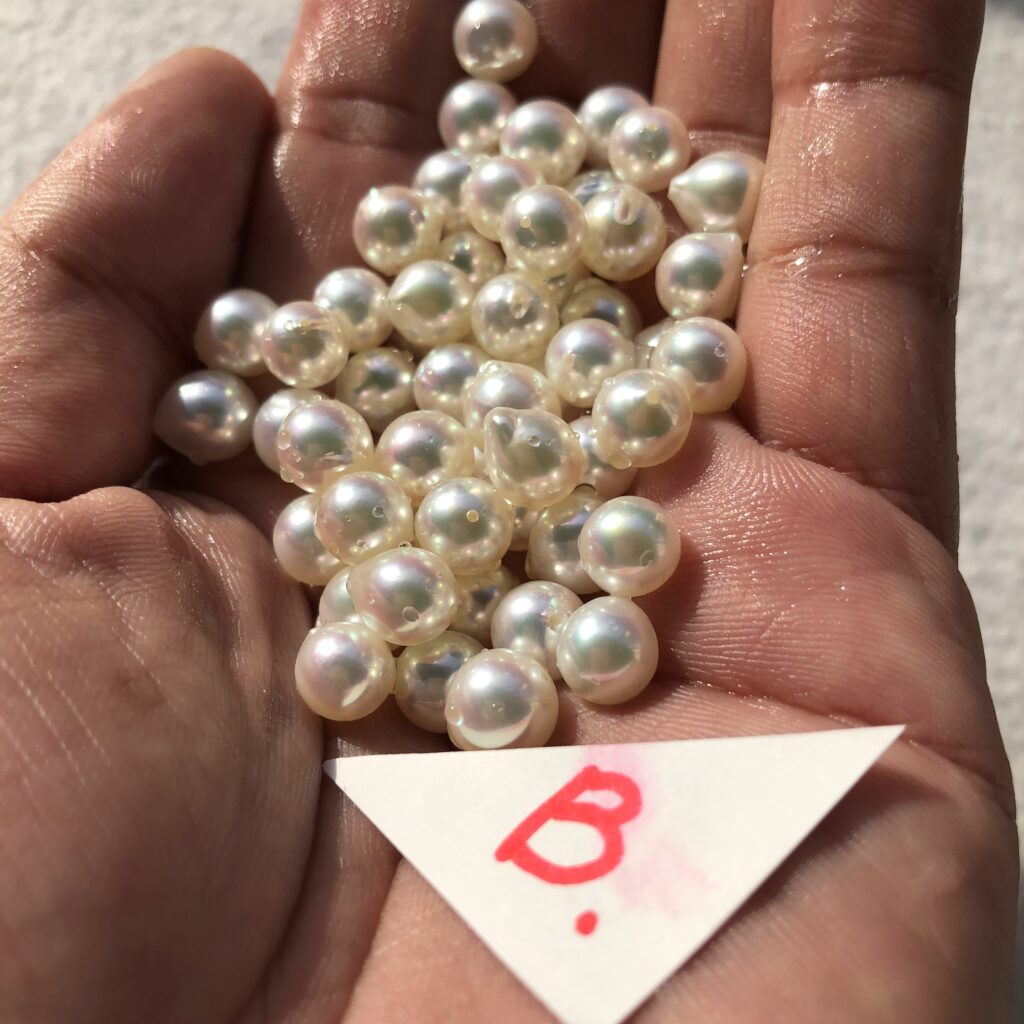

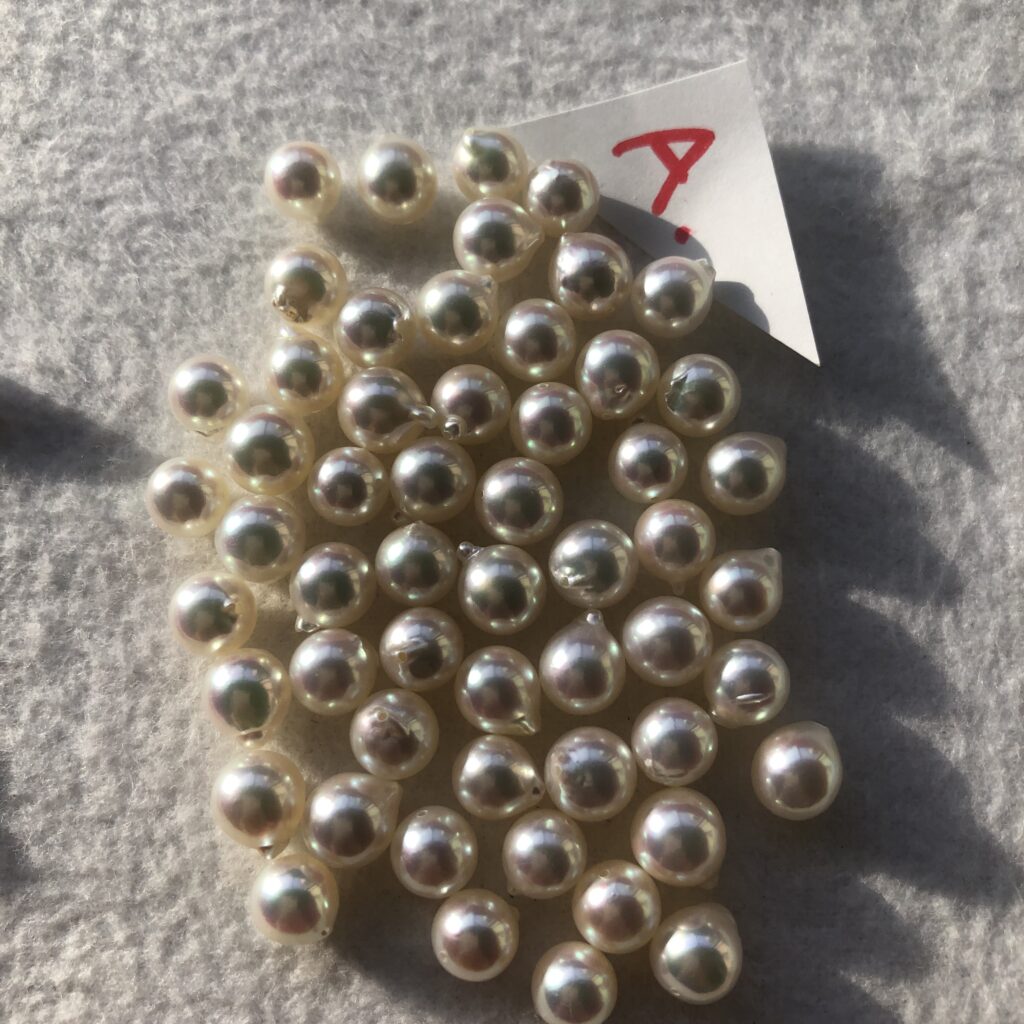
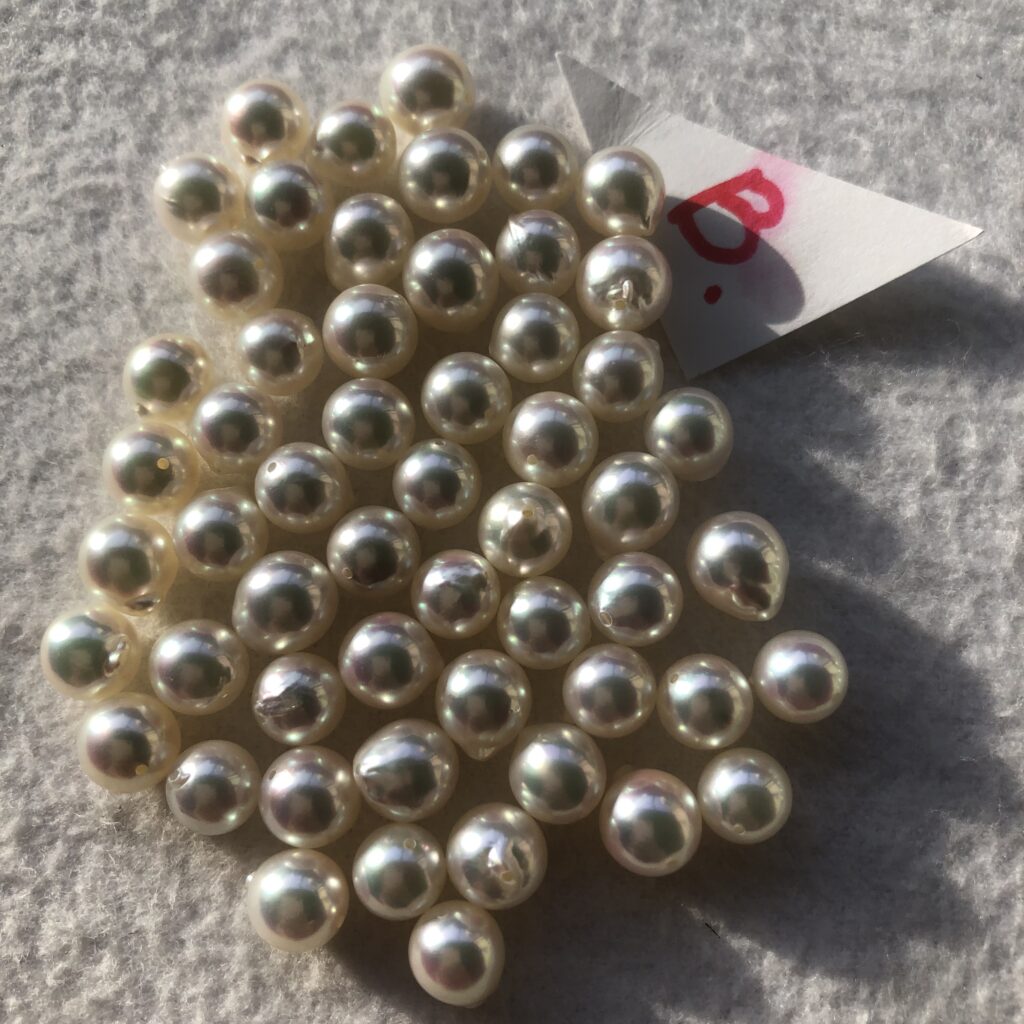

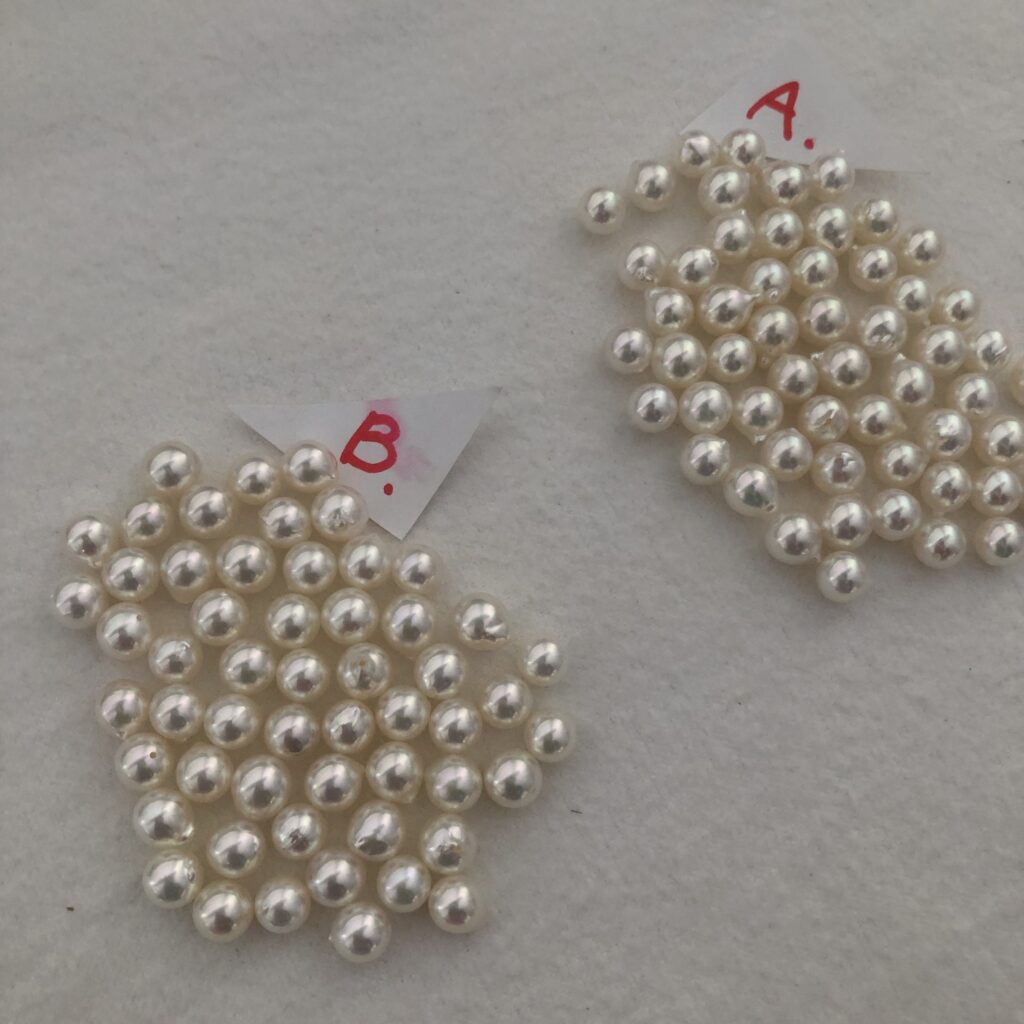
By the way, the necklace I made today is with the B pearl that I drilled a hole in the other day. A was made into a necklace with blue thread, while B was made with silver thread.
It is a truly charming pearl that makes my heart skip a beat just by looking at it.
Thanks to this beautiful pearl, I’ve been busy this week and couldn’t help but make a necklace. My day job is also related to pearls, but currently it’s mostly paperwork. I’m not good with numbers, but from morning until evening, I stare at the computer and calculator, crunching numbers. However, looking at pearls like this seems to soothe my stress. Currently, the insertion of nuclei into akoya oysters is going smoothly at the pearl farm. The akoya oysters also seem to be doing well. In other areas of Japan’s pearl farms, akoya oyster deaths are still noticeable this year. The supply of akoya pearls has decreased, causing abnormal price increases. I can only hope that it will gradually settle down.

This morning was shrouded in dense fog.

Comment